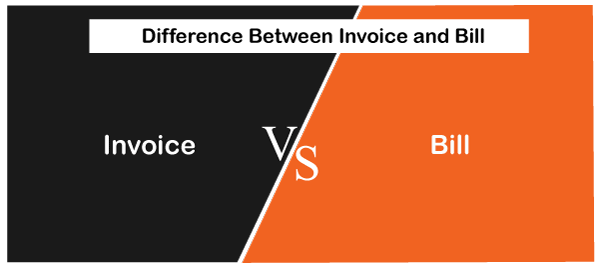Difference between Invoice and BillMany of us go shopping and buy things for our homes or ourselves. All of us are aware of the terms like invoice and bill. But what do they really mean? Do they mean the same? These questions always arise in our minds. We are often confused between an invoice and a bill as we feel they are the same. Both are used to pay money to the shopkeepers, retailers, etc. But they differ in certain aspects. 
Let us look at some of the key differences between an invoice and a bill.
So, these are some of the key differences between an invoice and a bill. But let us see some more information regarding both the terms. Invoice is also called a tab in layman's language issued by the seller indicating details like the number of products bought by the buyer, the due date, the address and contact details of the buyer and the seller, etc. An invoice also includes the terms and conditions of the payment. An invoice is generally used to buy products on credit. The majority of sellers include those who deal in electronic products like refrigerators, LCDs, LEDs, etc. There are many kinds of the invoice like:
So, these are some kinds of invoices that are often used by the buyers and sellers. There are other kinds of invoices as well, like the self-billing invoice, timesheet, ERS (Evaluated receipt settlement), progress billing, etc. These types of invoices are not used much by the sellers. Well, it is interesting to note that the payments associated with the invoices are paid after all the goods are delivered. The buyer has to inform the seller that he/ she has received the goods, and they will make the payment before the due date. Sometimes we often associate invoices with receipts. But just like bills, receipts are also different from invoices. The invoices keep track of goods that are being supplied and indicate the remaining payments that are owed by the buyers. On the other hand, receipts are generally used as proof of the buyer's payment. Now, having discussed about the invoices, let us take a look at some key information regarding the bills. Bills are used to make complete payments either with cash or a card when one goes for buying products. For instance, when we buy clothes or any electronic gadgets, we tend to make the complete payment. For making a complete payment, we are offered a bill. A bill can be used as a proof to indicate that the payment has been made. Apart from that, unlike an invoice, a bill does have a recognized number. A bill contains information like the price of the product, the price payable, the mode of payment, the tax added to the bill, etc. There is a kind of bill called the bill of sales. It is a legal document that is used to signify that the seller has sold goods to a buyer. This kind of bill is used to indicate a sale. For instance, if we are selling our car to a buyer, then the most important part of the transaction would be the bill of sale that will indicate the buyer's details, the date of car sold, etc. The bill of sale is considered as one of the proofs to indicate that the payment has been made. Both invoice and bill are used for making payments. Both are used as a proof that the payment has been made. Yet, there are some differences between the two terms. An invoice is used for credit purposes, while a bill is used for making direct payments. We must not be confused between invoice and bill. Both are safe ways of making payments. Thus, both invoice and bill are important modes of payments used by both sellers and buyers.
Next TopicDifference between
|
 For Videos Join Our Youtube Channel: Join Now
For Videos Join Our Youtube Channel: Join Now
Feedback
- Send your Feedback to [email protected]
Help Others, Please Share










